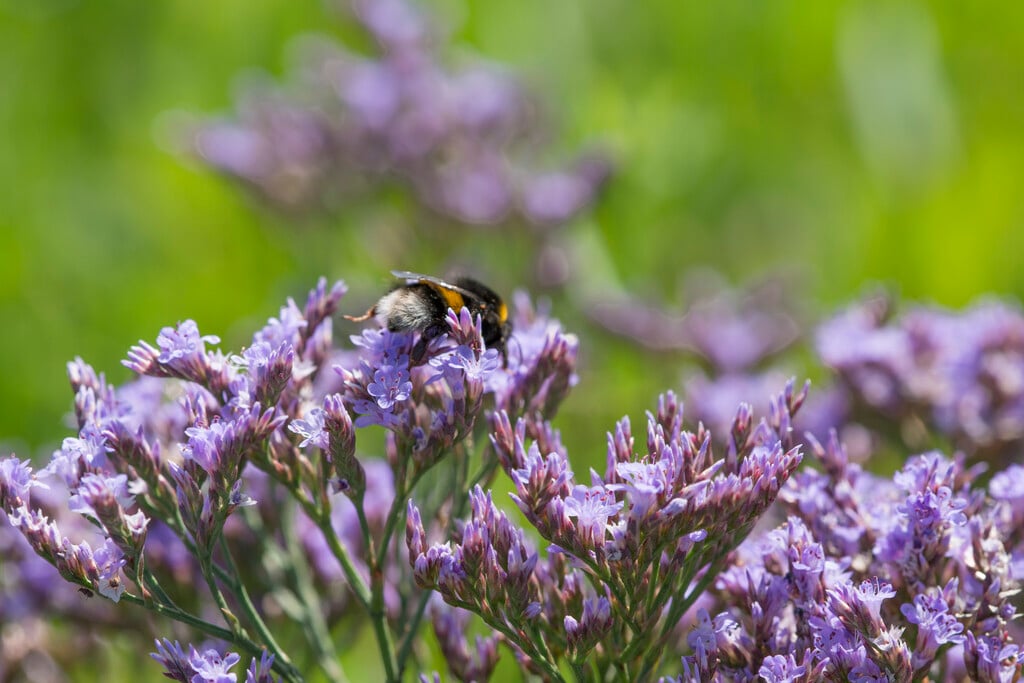Limonium vulgare
common sea lavender
Clump-forming perennial native to coastal areas, about 30cm tall, with basal rosettes of slender, green to grey-green leaves. Papery, lavender-lilac or pinkish-mauve flowers, are produced in sprays, on branched, wiry stems to 45cm tall, over a long period during summer

Size
Ultimate height
0.1–0.5 metresTime to ultimate height
2–5 yearsUltimate spread
0.1–0.5 metresGrowing conditions
Moisture
Well–drainedpH
Acid, Alkaline, NeutralColour & scent
| Stem | Flower | Foliage | Fruit | |
| Spring | Green Grey Silver | |||
|---|---|---|---|---|
| Summer | Purple | Green Grey Silver | ||
| Autumn | Green Grey Silver | |||
| Winter |
Position
- Full sun
Aspect
South–facing or West–facing
Exposure
Exposed or ShelteredDrought resistance
Yes Hardiness
H7Botanical details
- Family
- Plumbaginaceae
- Native to GB / Ireland
- Yes
- Foliage
- Deciduous or Semi evergreen
- Habit
- Clump forming
- Genus
Limonium can be annuals, deciduous or evergreen perennials with simple or pinnately lobed leaves and showy panicles of small flowers with long-lasting coloured tubular calyces and insignificant, ephemeral petals
- Name status
Correct
How to grow
Cultivation
Grow in any well-drained, preferably sandy, soil in full sun. Tolerant of dry stony soils and ideal for coastal or marititime planting and gravel gardens
Propagation
Propagate by seed or by division in spring
Suggested planting locations and garden types
- Coastal
- Cottage and informal garden
- Gravel garden
- Wildlife gardens
- Cut flowers
- Flower borders and beds
Pruning
Tidy flowered stems after flowering
Pests
Generally pest-free
Diseases
May be susceptible to powdery mildews
Love gardening
Sign up to receive regular gardening tips, inspiration, offers and more
View our Privacy Policy
Get involved
The Royal Horticultural Society is the UK’s leading gardening charity. We aim to enrich everyone’s life through plants, and make the UK a greener and more beautiful place.